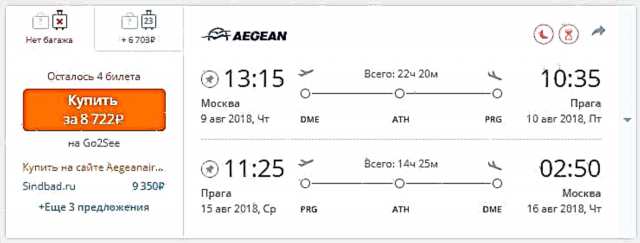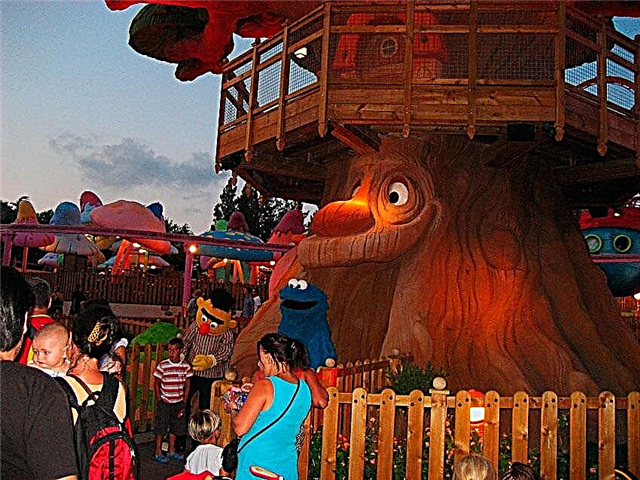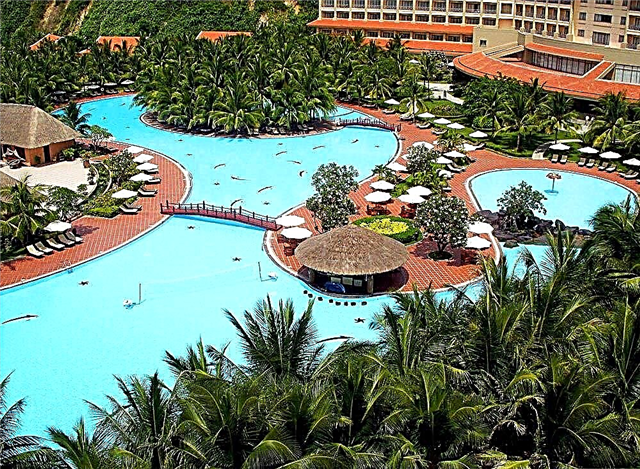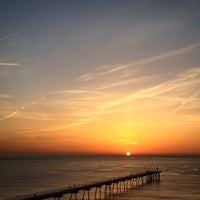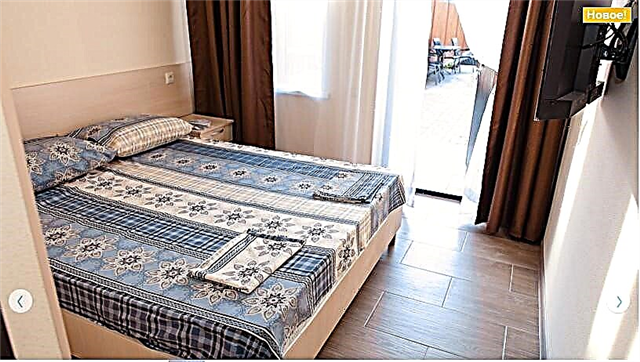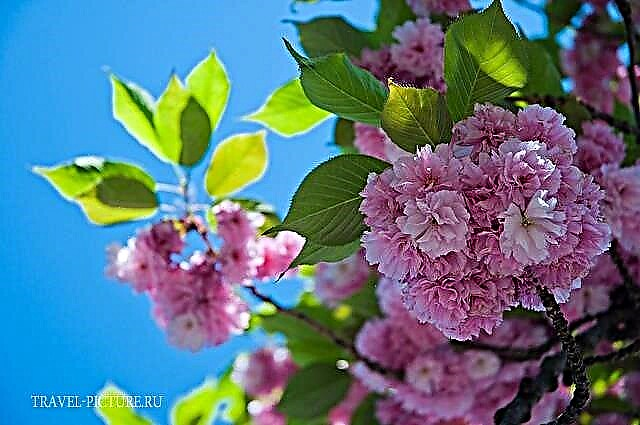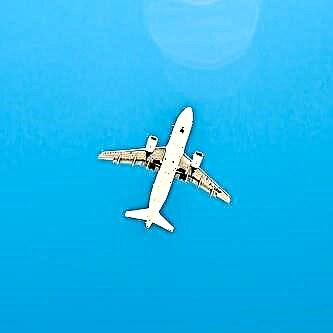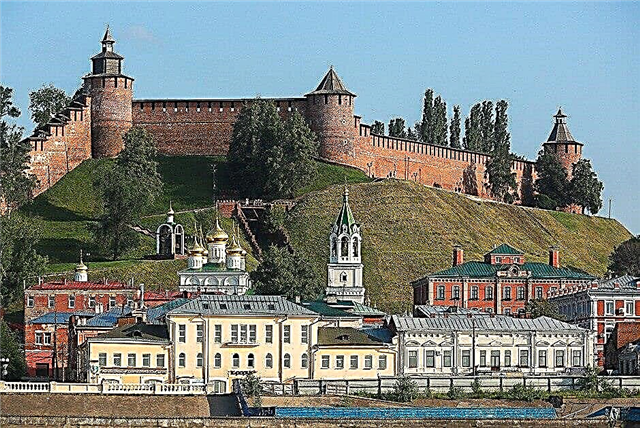The Nizhny Novgorod region is one of those regions of the country where, in terms of attractions, there is a little of everything. They do not forget about history, therefore they maintain traditions, restore temples and focus on famous fellow countrymen. Another area of tourist recreation is natural features. This applies to lakes and the local nature reserve.
There are also more modern entertainment or those that are not found everywhere, for example, the cable car or exotic museums. The sights of the Nizhny Novgorod region are mostly of regional importance and are not well known in Russia. However, this does not make them less interesting. On the contrary, travelers have a reason to expand their horizons and learn something new.
The most interesting and beautiful places in the region
List, photos with names and descriptions of attractions worth visiting!
Nizhny Novgorod Kremlin
Built at the beginning of the 16th century. It is located in the very center of the city and is its oldest building. It is located at the confluence of two rivers and rises above the district. There are several memorable places nearby: from Minin Square and Pozharsky to Pochainsky ravine. It was originally used for military purposes, including defense and army training. In the modern period, long restoration work is underway here, they are reflected in the appearance of the fortress. Towers, cathedrals, gardens and monuments have been preserved to varying degrees on the territory of the Kremlin. The buildings house the city council, art museum, court, treasury and exhibition halls.

Museum-reserve of Alexander Pushkin "Boldino"
Founded in 1949. Located in the village of the same name. The territory belonged to the Pushkin family for several centuries. Here the poet worked fruitfully in 1830. Now the complex is a vast territory with thirteen architectural objects. In the manor house, the atmosphere of the times of Pushkin has been restored. Events related to the poet's work are being held.

Factory "Khokhloma painting" in Semenov
The painting school has been operating since 1916, the artel since 1931. The name comes from the settlement where wood products were brought for sale. Gradually, folk art took shape in a separate style with its own traditions and rules. Since the 60s of the last century, the factory has become the largest production of art objects of this kind. Here you can not only look around, but also buy something as a keepsake.

Nizhny Novgorod ropeway
Opened in 2012. It is a ferry across the Volga from Nizhny Novgorod to Bor and back. Although it is of paramount practical importance as a transport artery, it is also popular with tourists due to its unusual and panoramic views. The length is 3661 meters. Cabins for eight. Travel time is about 13 minutes. It works every day, has a strict schedule. You can buy a single ticket or season ticket.

Shchelkovsky farm
Founded in 1973. This is an open-air museum and historical complex. Located on an area of 36 hectares. The Trans-Volga village of the 19th century has been recreated here. In addition to houses, several wooden churches, barns, mills and wells were brought here, fences and other attributes, both external and internal, were recreated. Some of the objects are unique and date from an earlier period.

Zheltovodsky Makariev Monastery
Female. Located on the left bank of the Volga in the village of the same name. Founded in the middle of the 15th century. Has a rich history, returned to the church in 1991. It includes several temples, a cathedral, a courtyard church, a refectory, bell towers, utility rooms, and more. The territory is surrounded by a fortress wall with towers, which resembles the architecture of the Kremlin. About 30 nuns live here permanently.

Pechersky Ascension Monastery
Male. Located in Nizhny Novgorod. Founded in the first half of the XIV century. At the end of the 16th century, it was damaged by a landslide and was relocated. In Soviet times, it was not active, it was returned to the church in 1994. On the territory there are a cathedral and three churches, all built no later than the beginning of the 18th century. There is also a bell tower, which tilted over time, a striking clock, bishops' chambers and other buildings.

Seraphim-Diveevsky Monastery
Female. Located in the village of the same name. Founded at the end of the 18th century, it worked until 1927, was abolished, returned to the church in 1988. The Trinity and Transfiguration Cathedrals are architectural landmarks in themselves. The shrines of the monastery include the “Tenderness” icon, the holy Kanavka, particles of the relics of saints. Pilgrims are also attracted by holy springs. Baths have been built. The water is considered miraculous.

Annunciation Monastery in Nizhny Novgorod
Male. Located on the right bank of the Oka. Founded at the beginning of the XIII century. Closed after the revolution, rebuilt in 1993. The main relics and values are the list of the Korsun Icon of the Mother of God (the original is lost), the porcelain iconostasis and the Old Russian iconostasis installed in local cathedrals. On the territory there is a bust of Alexander III. Theological seminary works.

The city of craftsmen in Gorodets
Museum and Historical Complex. Opened in 2010. About a dozen expositions work on an ongoing basis: Old Russian painting, Gorodets painting, woodcarving, pottery and others. Workshops on various types of creativity and applied arts are held on the territory. There is a special ceremonial house for tea drinking, where they treat Ivan tea and local gingerbread.

Voskresenskoe Povetluzhie
It is located in the floodplain of the Vetluga river. The natural park was founded in 2008. The area is about 35 thousand hectares. It has a zonal division: in part of the territory, economic activity is limited, in parts it is completely prohibited. The rest of the land is being improved for the organization of mass recreation. Coniferous and deciduous forests coexist. Rich fishing grounds. Lake Svetloyar is a part of Povetluzhie.

Lake Svetloyar
Located on the territory of the Resurrection Povetluzhie. The area is about 12 hectares. The greatest depth is about 34 meters. Has a perfect oval shape. The water is clean, the surface of the lake never becomes muddy, it can be stored for a long time in a jar or bottle without precipitation and change in taste. Disputes about the origin do not subside to this day, despite decades of research. The Museum of the Ages is located nearby.

Lake Vadskoe
Located in the village of the same name. Nearby there is a river of vodka that goes into the ground just before it flows into the lake. Area - 0.56 km². The deepest is 15 meters, the average is 3 meters. Water does not freeze in winter due to powerful underwater currents. Karst caves are of particular value and interest for tourists. A hotel has been built on the shore and a diving center is operating on a permanent basis.

Lake Charskoe
Located near the village of Mukhtolovo. The length is about a kilometer, the width is different - within 450 meters. The depth in shallow water is up to 2 meters, the maximum is about 15 meters. The river of the same name flows through the lake. The bottom is sandy and muddy, part of the coast is swampy, the rest of the territory is suitable for recreation: swimming, setting up tents, picnics and other things. Rich in fish, pike is especially good at catching.

Kerzhensky reserve
Founded in 1993. The area is slightly less than 47 thousand hectares. The area is mostly forested, but there are also wetlands. Rare plant species grow here, 170 species of birds, as well as beaver, desman and other animals live. Measures are being taken to restore and increase their populations. Some representatives of the fauna are artificially introduced or sent to other territories in groups.

Ichalkovsky Bor
The protected area is located near the village of the same name.The area is 10 650 hectares, significantly increased since the assignment of a special status in the 60s of the last century. Karst caves are a feature of these places. They have created their own microclimate: some are cold in winter, in others - almost tropics. Although the official name is "boron", there are no more than a quarter of pines in the forest.

Bolshaya Pokrovskaya street
Located in Nizhny Novgorod. It became the main street in the 18th century. Named after the church located on it. In 2004, a major reconstruction was completed here, and Bolshaya Pokrovskaya acquired its current appearance. New paving stones and sculptures appeared on both sides. Some historical buildings have been demolished, modern ones have been built, such as hotels and shops. The street connects the four main squares of the city.

Main fair house
The opening of the exhibition took place in 2017. The multimedia complex "Russia is my history" tells about the country and reproduces important events from its past. Separate expositions are dedicated to the Rurikovichs and the Romanovs. There is a breakdown by periods, information stands tied to specific moments in history. Before the exhibition was placed here, the fairhouse was renovated, the facade was renovated and all outdated decorative elements inside were replaced.

Mining Museum in Peshelani
Opened in 2006. The total area is 3 thousand square meters. The museum is located in a mine, where there are areas with installations and exhibits, and there are also untouched gypsum mining sites. Visitors are given special clothing, flashlights and helmets to immerse themselves in the atmosphere and comply with safety rules. The excursion concerns not only mining, but also archaeological finds and the history of the region.

V.P. Chkalov Memorial Museum
Located in the city of the same name. The complex in honor of the pilot of the hero of the USSR was opened in 1940. Moved to a new location in 1956, away from the reservoir shoreline. The exposition is located in the house where Chkalov grew up. Each room is set aside for a different period of his life. "Russian Wings" is a tourism center and a city quarter that unites the Chkalov Museum, an exhibition hall and the Museum of Speeds.

Museum "Locomotives of Russia"
Located in Nizhny Novgorod. It is an open area with 14 exhibits - real old freight and passenger locomotives, restored, but with welded windows and doors. Since the exhibition is located not far from the operating station, everyone passing by can see it. For those who want to take a closer look at the steam locomotives, the entrance to the territory is free.

Museum of samovars in Gorodets
Founded in 2008. Located in a house that previously belonged to a merchant. The exposition consists of five hundred samovars. Some were made in the 18th century. In addition, the museum exhibits items related in one way or another to the theme of the exhibition: cups, saucers, trays, archival photos and documents. During the tour, we are talking about the history of samovars, as well as details of rare exhibits.

Cherry Museum in Big Bakaldy
Opened in 2006. The main theme is the gardens located in the village. The first cherry trees appeared here in the 17th century. Gradually, this place became the center of cultivation and cultivation of cherries in the region, rare varieties appeared, and the area of the gardens was constantly increasing. The best time to visit is in spring, as the trees begin to bloom. The Cherry Bazaar is held annually.

Nizhne-Volzhskaya embankment
Located in Nizhny Novgorod. It stretches for 3 kilometers along the banks of the Volga. It is divided into two levels: the one that is closer to the water is pedestrian, the one that is further includes the carriageway. There are also two conventional sectors: from the Kazan exit to the river station, and from it to the Kanavinsky bridge. After the restoration, new sidewalks, a green lawn, and bike paths have appeared.

Oransky Bogoroditsky Monastery
Male. Located near the village of Oranki. Founded in 1634. Closed after the revolution. During the war and a little later, a camp was located here. Returned to the church in 1993. There are three churches on the territory of the monastery. In addition, already in the modern period, a bell tower, several outbuildings were erected, and a cathedral was laid. An unquenchable candle burns in front of the icon of the Mother of God.

Temple complex of the village of Troitskoe
Located on the banks of the Vetluga River. Two temples built by monks without a single nail according to ancient technologies are the heart of the complex. The Church of the Life-Giving Trinity is dated 1713. It includes a refectory, a prayer hall, a bell tower. A wooden iconostasis made of maple has been preserved in the Trinity Cathedral. The interior decoration of all buildings is mostly original.

Rashid Mosque in Medyan
Built in the early 90s of the last century. Named after the mother of the main patron of the arts. Inside, white and gold colors prevail, this also applies to the floral ornaments that adorn the halls. There is also a local history museum that tells the history of the Nizhny Novgorod Tatars. There is a stele in front of the entrance - a monument to Ya-Sin. The complex also includes the house of FK Vakhitov and the burial places of the clergy.

Resurrection Cathedral in Arzamas
Built in the first half of the 19th century. It has the shape of a Greek cross. The abundance of columns makes it look more like a theater than a classic temple. The pediments are decorated with frescoes. Unlike most religious institutions, it did not remain closed for long after the revolution. Services resumed in the last years of the Second World War. It is clearly visible on the panorama of the city, as it stands on a hill.

Shukhov Tower on the Oka River
The only one in the world in terms of the aggregate type of design and purpose. One of the two surviving towers of engineer Shukhov. Built in the late 1920s. Initially, there were several such structures on the Oka: some were dismantled as planned, one was dismantled illegally. The remaining tower is guarded by the state. It is included in the list of the country's cultural heritage.

Gorky reservoir
Located on the Volga. Located on the territory of four regions at once. It was formed after the construction of the hydroelectric dam in 1957. The area is 1590 km². The greatest depth is 22 meters. average - about 2.5 meters. The water level fluctuates within 2 meters. Used for fishing and recreation. There are many cities along the banks of the reservoir. The most picturesque places are near Plyos.


